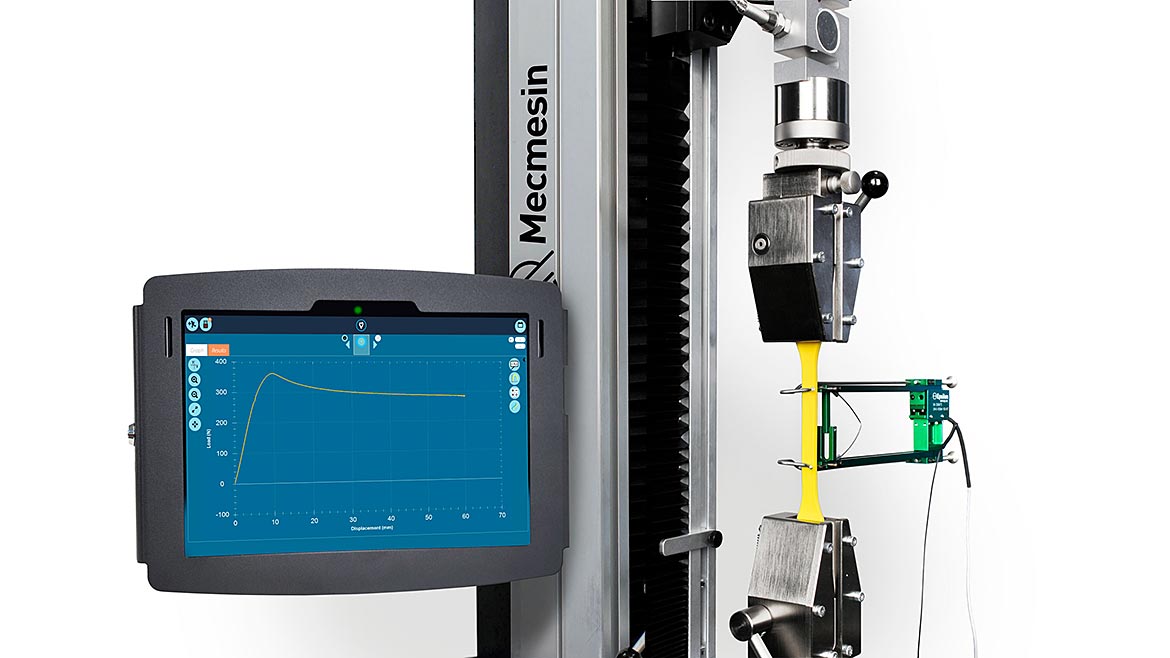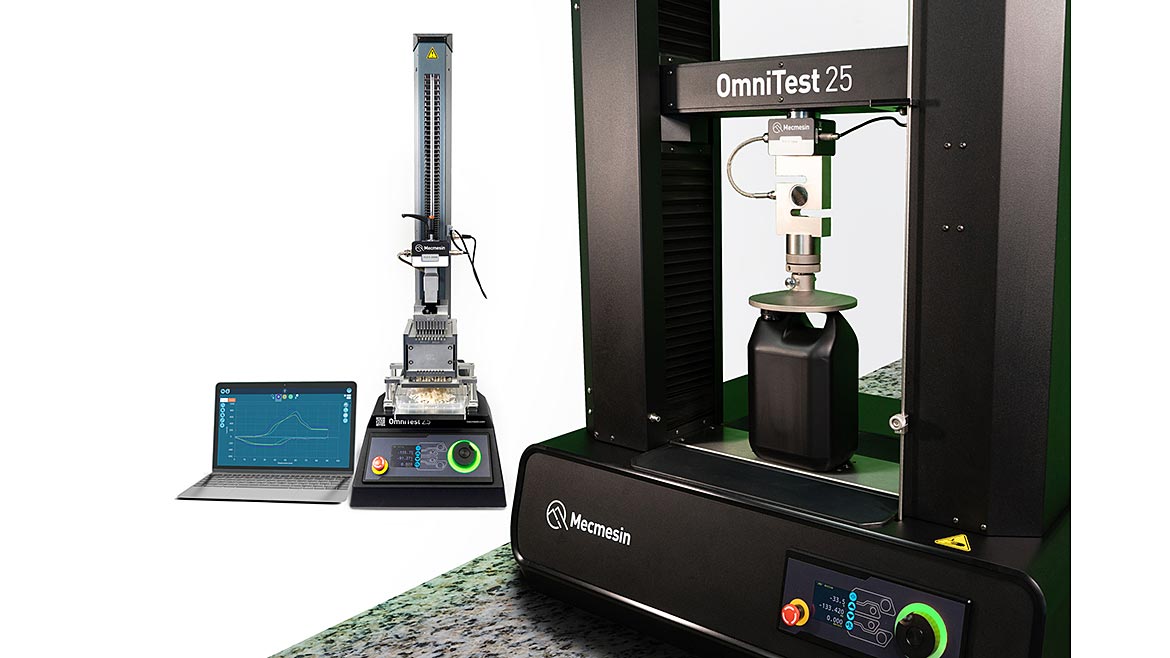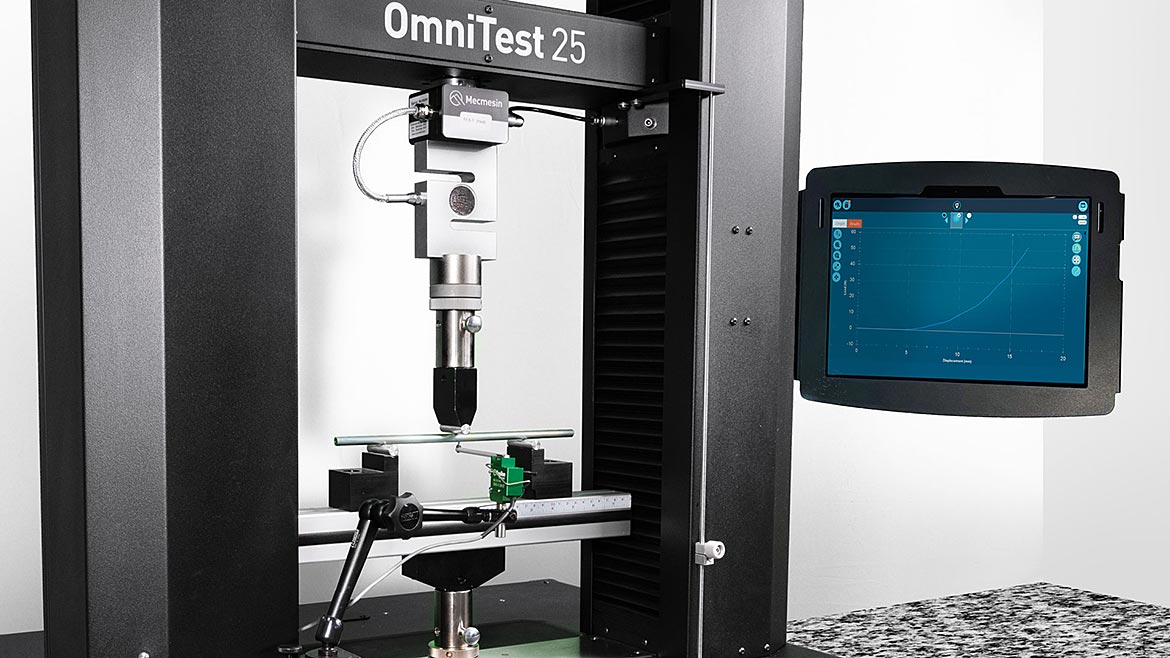Test & Inspection
What Product Quality Testing is Made of
Quality materials are the route to quality products.

All Images Source: Mecmesin, a PPT Group company
Any physical manufactured product is made of something—its fundamental material is the baseline on which its functionality and usefulness are built. Neglecting materials testing can be the root cause of final product failure in service and damage a brand’s profitability and reputation. Quality materials are the route to quality products.
For a product to be fit-for-purpose and meet legislative and commercial requirements it must check several boxes:
- Strength—for resilience and durability in its lifetime of service
- Flexibility—elasticity and recovery to bend and not break
- Weight—lightness is the influential side effect of an optimized design
- Manufacturability—forming and finishing to produce the physical item
- Sustainability—recyclability, eco-design, sustainable materials and lean manufacturing are rapidly evolving drivers
- Compliance – regulations, standards, and specifications to ensure safety, functionality, and adherence to legal and environmental requirements
- Internal standards—a brand’s ISP, innovation and the desire to make a market-leading, customer-pleasing product should not get lost in the legislation
- Functionality—ultimately the product must do what it claims to do on its delivery packaging
These universal, varied and potentially conflicting quality challenges are all able to be benchmarked by calculating the physical properties of raw materials and measurable attributes of a final product or component. Manufacturers use the aptly named universal testing machine to do just that, i.e., all the above.
Forcing The Issue
By testing the object in a controlled physical simulation of its force loading in use, manufacturers can be confident in meeting the ultimate goal of functionality. It is usually not possible to influence these loads— the forces a multi-ton truck’s suspension must withstand, the pressures (and vacuums) a spacecraft must resist, and the treatment a child’s toy must endure—but the ability to replicate the conditions consistently enables raw materials and final product design to be optimized.
Fundamental materials testing is performed to calculate a wide range of physical properties, including but certainly not limited to:
- Tensile strength
- Compressive strength
- Bend strength
- Elongation
- Elastic limit
- Young’s Modulus
These scientific terms quantify how we can compare raw materials between batches of the same type, for QC purposes, or between different types with a view to replacing one with another—better—alternative.
Essential product testing is performed to measure the object’s behavior under the application of loading specific to its intended purpose.
- Pull-out resistance of a fastener
- Crush resistance of a packaging box
- Flexure of a golf club shaft
- Extensibility of a rubber hose
- Stretch of a textile
- Elasticity of a suspension bridge cable
Materials testing is often destructive as we wish to know the ultimate bounds of its capabilities. Product testing may also be destructive but is often nondestructive when measuring how well it performs when being used for its intended purpose.
Material test specimens are loaded in tension, compression or bending to expose their properties in a repeatable and focused manner. By gripping the specimen in a certain way, we can control the stresses (loads) and strains (deformations) to be plugged into the mathematical formulae and return the numbers we require.
Tensile Testing

Compressive Testing

Flexure Testing

Everything Everywhere All At Once, Digitally
We have seen how a software-controlled universal testing machine is the golden bullet for applying stress, strain and a multitude of other loading conditions on the sample in question. Standard geometry test pieces are used for raw materials work to ensure accurate like-for-like comparisons. For industry-specific product samples, industry-specific fixturing is employed to hold and deform them as appropriate for the loading conditions it will experience in the field.
The software enables complex programs to be built and so precisely controls how the sample is loaded. It also collects the relevant data and automatically performs any calculations—immediately returning the results, as graphs, tables, or a straightforward Pass/Fail. In recent years, the digital revolution has hit the wider manufacturing world—manufacturing 4.0 is well underway—and the advances in implementing the secure handling of data has allowed the policies and process once reserved for the materials science lab to be leveraged elsewhere. Today’s UTM software must be built on architecture and have the connectivity to add value to global companies. Storage, sharing and recall of the data—programs and results—enable the same, consistent implementation of tests across sites, with traceability that is essential in the pharmaceutical and medical industries.
Back To Basics
A final product or component may require modification or replacement for any number of reasons—legislative changes, feedback from maintenance and repair issues, the desire to improve features and functionality. Any one of these triggers may necessitate substitution of raw materials. Organizations with quality assurance capabilities that include materials testing UTM equipment can be responsive by implementing the same test routines to ensure the new product confidently matches or exceeds its predecessor.
Looking for a reprint of this article?
From high-res PDFs to custom plaques, order your copy today!





